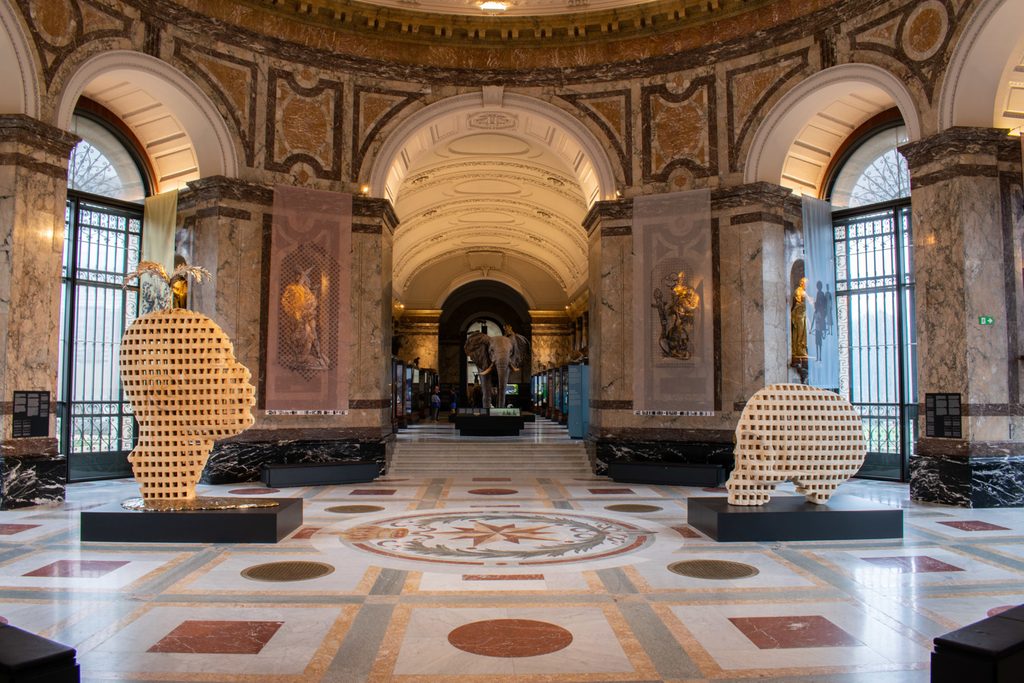The Africa Museum in Tervuren will remove several statues dating back to the colonial era from its tour route, it announced in a press release on Monday.
Currently exhibited in an introductory section of the museum to question colonial propaganda, the statues will now be moved to a more discreet area only accessible on guided tours.
The Africa Museum's Grande Rotonde, which had attracted criticism over the museum's decolonisation efforts, has been refurbished, the museum's management said on Thursday. At the time of the renovation, there had been talk of removing the colonial statues from the Grande Rotonde. The Heritage Department, however, highlighted that these sculptures were an integral part of the listed building. It was therefore decided to add elements to adapt the message rather than remove them.
The museum then launched a competition for African artists to create a work of art to act as a counterweight to the colonial statues. Congolese artist Aimé Mpane was selected for his work 'Nouveau souffle ou le Congo bourgeonnant', a monumental wooden statue that was placed in the Grande Rotonde shortly before the museum reopened in December 2018.
"This project is perfectly in line with what I want to do: going beyond the past to bring a vision of the future that appeals to our collective memory," explained the artist. "I refer to Bantu philosophy, which is humanist. The idea behind my works is to encourage the viewer to think."
But with many visitors expressing their incomprehension at the retention of the colonial statues and a UN working group criticising in February 2019 that the museum reorganisation did not go far enough, Mpane proposed placing a second wooden sculpture in the Grande Rotonde.
This work represents the skull of Chief Lusinga, whose head was severed by a Belgian official in 1884 before being taken to Belgium. "One sculpture wasn't enough, you could tell by the reaction of visitors," said Operational Director of Public Services Bruno Verbergt.
Reassessing history
The two wooden statues face each other, with one referring to the death and violence of the past and the other to the dignity and promise of the future. "They resonate with something that emerges from the collective unconscious. Seen in profile, they have an intriguing quality," says Mpane. "You can't erase or stifle the colonial past. We have to take it into account and move forward."
To complete the ensemble, Aimé Mpane called on his Belgian colleague Jean Pierre Müller to join his RE/STORE project and create a set of 16 semi-transparent veils, hung at a distance from the existing statues, on which contemporary images and references to pre-colonial African culture are printed.
Related News
- Decolonising Brussels: City takes first steps to make public spaces 'more inclusive'
- Brussels to give colonial past a special area in the city
"The museum gave me total freedom to do what I wanted and respected my vision," said Mpane. The artists and museum directors are convinced that they have taken another step forward in the process of decolonisation, but they are also aware that they will not silence all the critics. "There will always be critics, I'm not worried about that," replied Mpane.
"We're very satisfied with the results," says Bruno Verbergt. "It was in that spirit that we wanted to go. The colonial statues are still there – you can't erase the past – but now we can see them differently through the filter of the veils created by Jean-Pierre and Aimé."
"The two artists are suggesting that we look to the future while remaining conscious of the past. For me, decolonisation is not a project but a process. A museum must evolve with the times," says Verbergt.

